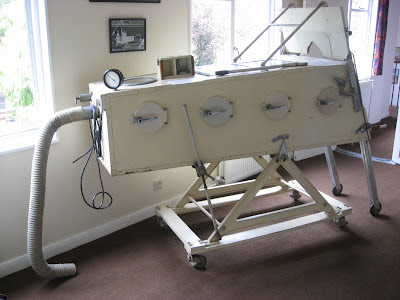 |
| Nuffield Place is located near to Henley-on-Thames and was the home to William Morris; later Lord Nuffield |
Being such a car enthusiast as well as someone who finds the history of the British motor industry a constant interest, a visit to Nuffield Place was a must. Opened up by the National Trust, I can report that the house is well worth a visit. I just hope the weather will be kinder to you than it was to me!
William Morris was born in 1877 and was a keen cyclist in his youth winning various trophies. After leaving school, Morris had ideas of becoming a doctor, although due to the expense of entering the profession, Morris instead started work in a bicycle repair shop. He soon branched out by setting up his own business at the family home repairing push bikes and soon after set up his own purpose built shop in Oxford that repaired bicycles and began manufacturing them.
It wasn't long until Morris moved to petrol power and designed the Morris Motor Cycle in 1901 at the age of 24. By 1912, (the same year the Titanic sank) Morris designed his first car, the 'Bullnose Morris' and production kicked off in Cowley.
The outbreak of the First World War halted progress and Morris turned to making munitions in the car factory as part of the war effort. Car production started again in 1919 and it is from then that things really started to take off. A production run of 400 cars were built in that year but by 1925 the figure had risen to 56,000. Morris was well aware of the effective production line and mass production processes pioneered by Henry Ford.
 |
| One of the lounges in Nuffield Place. Nothing in the house has been altered since the days when it was the home of Lord and Lady Nuffield |
In a bid to keep Austin in check, Morris bought the bankrupt Wolseley Motors. Thanks to a nearly finished advanced engine design, he slotted this into the new Morris Minor of 1928. Morris also produced sportier versions of their standard cars under the MG name, (Morris Garages); a brand that was started up by an employee at Morris, Cecil Kimber. Morris also bought Riley Motors from the Riley family. Morris Motors were at this time in a very strong position although the outbreak of the Second World War again halted progress. Morris turned his focus again on manufacturing munitions.
Following the war, Morris merged with Austin in 1952 to form BMC, (British Motor Corporation) and William Morris become director.
Morris oversaw a number of key designs in his time from the early Bullnose Morris and Morris Minor to the Issigonis designed Morris 1000 Minor of 1948. The BMC developed Morris 'Mini' Minor/Austin Seven of 1959 and the Morris/Austin 1100 were other huge successes that Lord Nuffield was involved with.
Although Lord Nuffield died in 1963, the Morris brand continued for many years after his death. The BMC became British Motor Holdings in 1966 when it bought out Jaguar and shortly after this, the majority of the British motor industry became 'one' as British Leyland. I expect Lord Nuffield would have been rather upset to see the demise of the once powerful British motor industry, mainly thanks to unions, strikes and mismanagement during the 1970's British Leyland saga. The last Morris badged car was the Marina based Ital, the final model of which rolled off the Longbridge production line in 1984.
 |
| Naturally Lord Nuffield was a keen inventor. This is his take on an exercise bike that he made using car parts. It's located in his games room that also includes a large billiards table |
Although Nuffield Place is a nice enough home with some pretty gardens, it's clear that Lord Nuffield was never extravagant with his money and never worried about material possessions. Although he was one of the richest men in the world, he always appeared to live thriftily and made it clear that his drive was not to increase his own personal wealth, but to see how far he could get. The only relatively expensive antiques in Nuffield Place are four grandfather clocks, all located in the downstairs hallway.
In later years, Lord Nuffield tired of the English winters and so often spent his time in Australia. These were his only notable expenditures. Even as far as his own personal transport was concerned, he had an identical Wolseley saloon to his wife's - her car can be seen in the garage at Nuffield Place. His can be seen at the British Motor Museum in Gaydon.
 |
| An example of a Morris built Iron Lung, a rather intimidating looking device but a very important instrument for the treatment of polio |
I came away from Nuffield Place with a much bigger understanding of what William Morris aka Lord Nuffield was like as a person. Although shy, he was very much an enterprising, kind and generous man who gave much to this country. Well worth a visit...